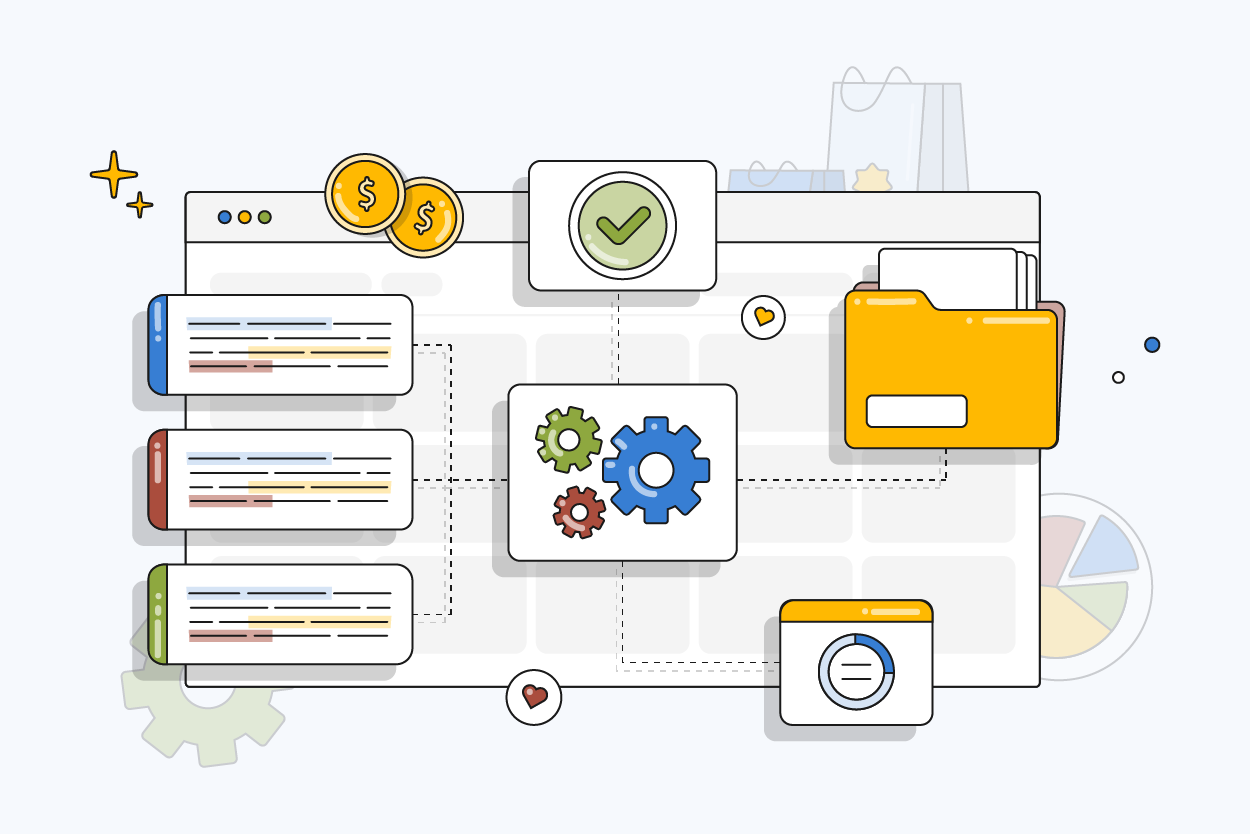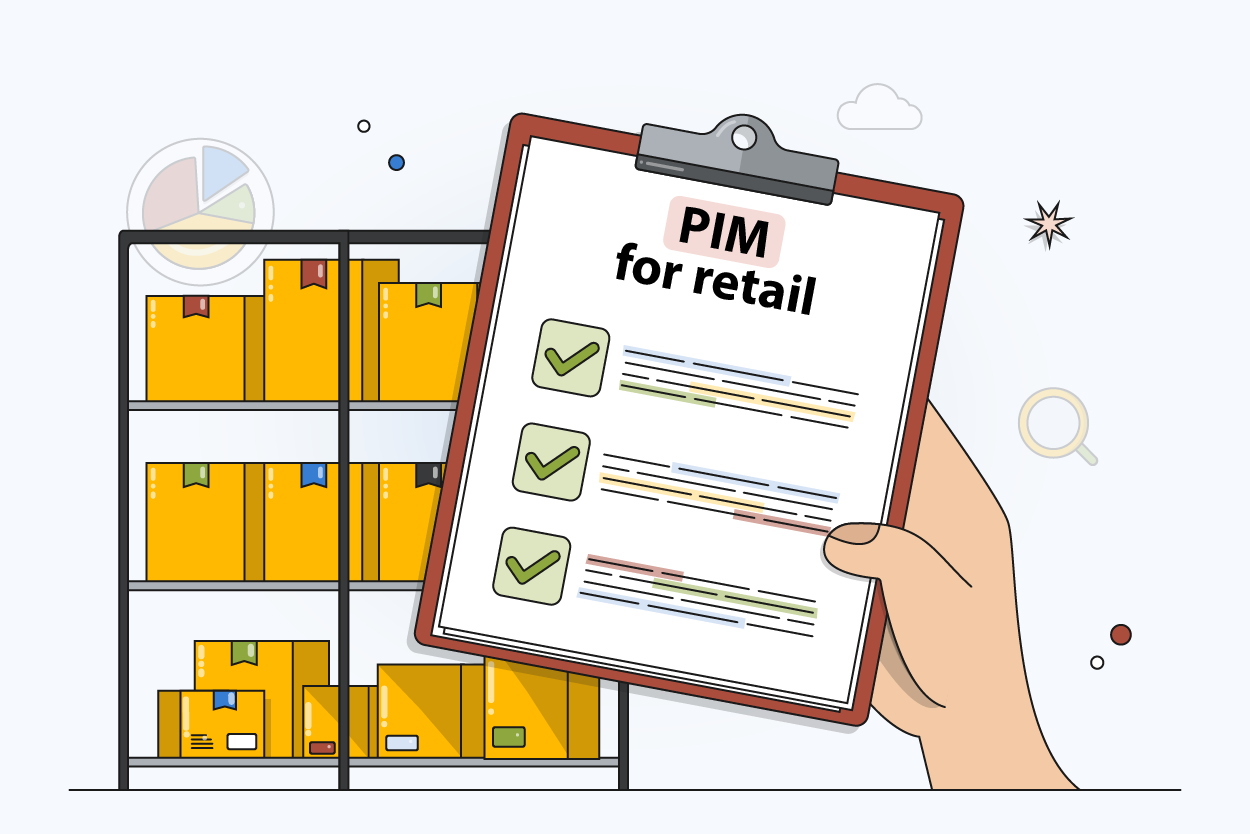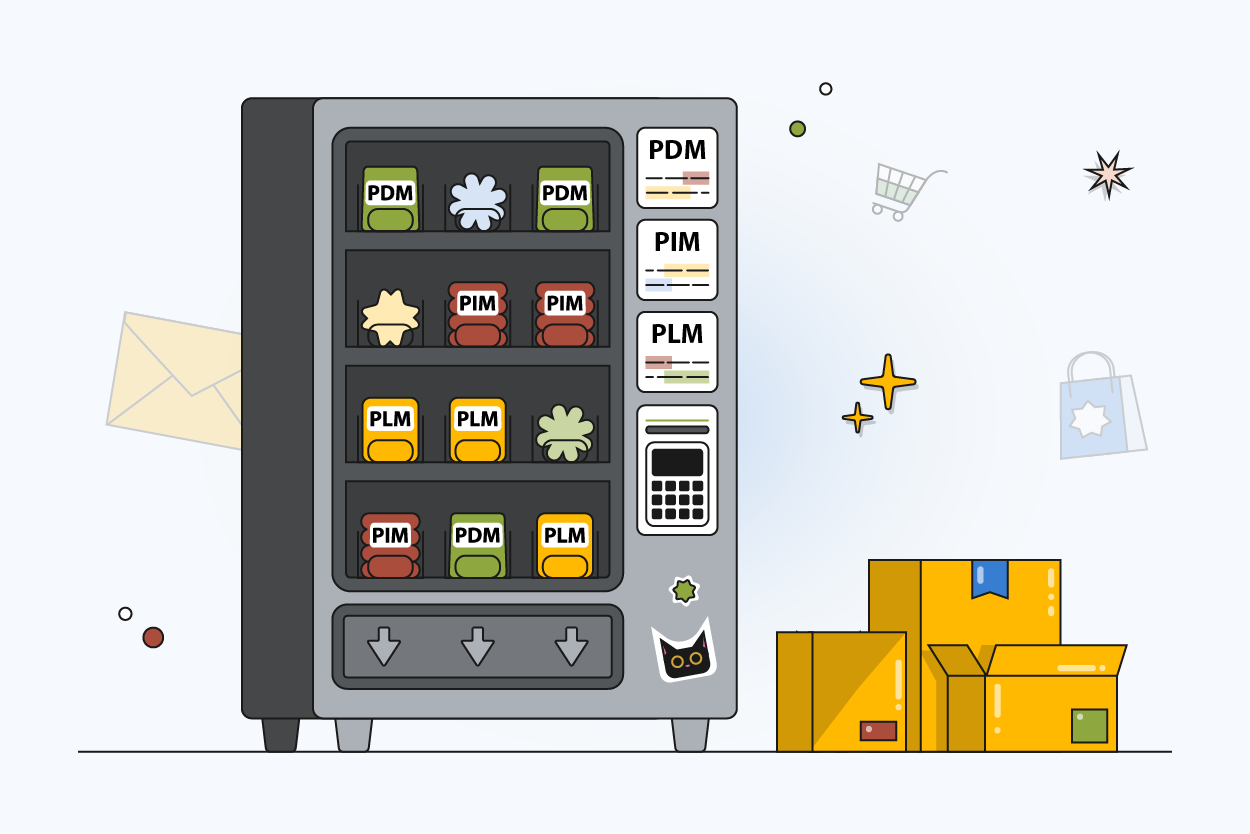What Does It Mean to Normalize Data? A Comprehensive Guide
Author name: Mark Chickering

Data normalization is the process of organizing database information to reduce redundancy and improve data integrity. In simple terms, it's about structuring your data so each piece of information is stored once and can be easily accessed when needed. This guide explains the technical aspects of normalization, from basic concepts to implementation challenges in real business environments.
Table of Contents:
- Understanding Data Normalization
- Database Normalization vs. Data Normalization
- Common Data Normalization Techniques
- Benefits of Data Normalization in Data Analysis
- Implementing Data Normalization in Large-Scale Enterprises
- Challenges and Limitations of Data Normalization
- Practical Examples of Data Normalization
- Conclusion
- FAQs in Relation to What Does it Mean to Normalize Data
Understanding Data Normalization
Understanding Data Normalization
Data normalization reorganizes databases to eliminate redundant information and establish consistent data formats. The process follows defined rules that determine how data should be structured within tables and how those tables relate to each other.
The Concept Behind Data Normalization
At its core, normalizing data aims to eradicate inconsistencies or duplicate information within datasets. Think about job titles - "Vice President" could be written as "VP", "v.p.", or even just "Vice". Now imagine trying to analyze this jumbled mess. Without normalization, big data becomes a giant puzzle with mismatched pieces.
How Does Normalization Work?
In terms of databases think foreign keys linking tables together—kinda similar—but they relate separate table's rows rather than individual items within those rows. Like organizing outfits by color after first sorting into type.
Here’s an excellent resource diving deeper into definitions if needed.
- You might also hear people talk about 'Codd normal form' which refers specifically database structure related techniques invented E.F Codd—not general value level normalization.
So, next time you find yourself staring at a messy dataset, remember: just like cleaning out your closet, data normalization might be hard work. But the benefits of an organized and efficient system are well worth it.
Normalization is like tidying up a messy closet - it's about organizing and standardizing data for easier analysis. It gets rid of duplicates, clears inconsistencies, and makes your database leaner and faster. Just remember: even though it might be tough at first, the benefits are well worth the effort.
Database Normalization vs. Data Normalization
The distinction between database normalization and data normalization can seem subtle, but they differ significantly in their applications. While both processes aim for consistency and efficiency in handling data, the specifics of what they target vary.
Data Normalization: Cleaning Up Individual Values
Think of data normalization as your personal assistant analyzing data and tidying up a messy desk—each item gets put back where it belongs for clarity and ease of access. This process ensures that each individual piece of information adheres to standard formats or norms within a data set. This is called data standardization. Normalization techniques, like scaling values into a consistent range (0-1) or converting all text entries to lower case, come handy here.
This approach helps eliminate any inconsistencies and redundant data due to different ways the same information might be recorded across data sets - such as "New York", "N.Y.", or "NY" referring to the same state. Ultimately reducing data by utilizing best standardized data practices and normalization rules.
Database Normalization: Organizing Underlying Structures
In contrast, database normalization is more akin to an architect designing how rooms should connect in a house—it's about creating an optimal structure or data model so everything flows smoothly,. It aims at organizing databases using rules derived from functional dependencies among attributes within relations—a mouthful indeed.
To simplify this jargon-filled description: imagine you're setting up categories on your company’s website for customers' job titles — 'vice president', 'manager', etc., You wouldn't want repeating entries like 'VP' next to ‘Vice President’. Database normalization would guide you towards having these under one heading by eliminating duplicate entries through various normal forms such as First normal form (1NF), Second normal form (2NF), Third normal form (3NF), and Boyce Codd Normal Form (BCNF).
By ensuring your database structure is efficient, you reduce data anomalies and improve the ease of querying. This also offers a significant advantage in managing data storage space - an aspect that's particularly crucial for large-scale enterprises grappling with massive amounts of data and data formats.
Just like an architect carefully plans room connections in a house for optimal flow, data normalization tidies up your data set. It standardizes information to get rid of inconsistencies and enhance accessibility. Similarly, database normalization organizes the underlying structures in databases. By eliminating duplicate entries, it boosts query ease and overall efficiency.
Common Data Normalization Techniques
Data normalization is a bit like cleaning your garage. You want to organize everything neatly so you can find it later without rummaging through piles of stuff. Here, our "stuff" is data in databases.
The First Normal Form (1NF)
The First Normal Form (1NF) eliminates duplicate rows from the table and ensures each cell contains only atomic values - single pieces of information.
This approach ensures every row has unique data entries, reducing redundant information and making for an efficient data storage space setup.
Advanced Forms of Normalization
Beyond 1NF, there are additional normalization levels that address specific types of data dependencies and redundancies. Each form builds on the previous one, creating progressively stricter rules for how data should be organized. Here's how the main normalization forms differ:
| Form | Rule | Example |
|---|---|---|
| 1NF | Each cell contains a single value, no duplicate rows. | Customer table: one phone number per cell, not "123-4567, 890-1234". |
| 2NF | Meets 1NF and all non-key columns depend on the primary key. | Separate customer and order data into different tables. |
| 3NF | Meets 2NF and has no transitive dependencies. | Store city/state in a separate location table, referenced by ZIP code. |
| BCNF | Meets 3NF and every determinant is a candidate key. | Employee–Department: department name determines department head. |
Most commercial databases use 3NF as the standard, as it provides a good balance between data integrity and query performance. BCNF is applied in cases where stricter rules are needed to eliminate all potential anomalies.
Struggling with Inconsistent Product Data?
Data normalization is just one piece of the puzzle. Learn how PIM systems automatically standardize and manage product information across all your sales channels.
Benefits of Data Normalization in Data Analysis
Data normalization is not just a fancy buzzword. It's an essential process that brings real, tangible benefits to data analysis. So, what is the purpose of data normalization?
The first major advantage is the freeing up of storage space. With duplicate entries eliminated and redundant information pruned away, you can save precious resources on your servers or cloud platforms.
This scaling down of data also has another huge benefit: improved query response time. When you're working with large data sets (hello, big data), every millisecond counts. Normalizing your data means queries run faster because they have fewer places to look for information.
Anomalies? What Anomalies?
Data anomalies are like weeds in a garden - they disrupt the growth of healthy plants and make everything look messy. Just as you'd pull out those pesky weeds from your garden, normalizing helps eliminate these annoying inconsistencies in your dataset.
In other words, by reducing duplicates and ensuring functional dependencies are maintained correctly, normalized databases ensure cleaner results when analyzing trends or patterns within our data pool.
A Cross-Examination Champion.
If Sherlock Holmes were a database manager instead of a detective, he would love normalized databases too. Why? Because cross-examining different sets becomes much more efficient once we've tamed our wild mess into neatly arranged tables linked via primary keys and foreign key labels.
No need to rummage through multiple sources trying to connect disjointed bits of evidence – all relevant info is available at one glance thanks to well-implemented normalization rules.
Think of data normalization as a game-changer in the world of data analysis. It's not just some fancy buzzword. When you eliminate duplicate entries and cut out redundant info, it lets you save on storage space and get faster response times to your questions. And here's a bonus - when inconsistencies are weeded out, analyzing trends or patterns gives you cleaner results. Imagine having all your data neatly sorted into categories like books in an organized library; that’s what this process does for easy access.
Implementing Data Normalization in Large-Scale Enterprises
As enterprises become larger, the data they manage becomes more complex. Juggling massive datasets and maintaining consistent customer information across various platforms becomes a daunting task. But here's where data normalization steps into save the day.
Data normalization forms are crucial to maintain data integrity and functional dependencies within larger-scale organizations' databases or CRM platforms. These techniques help eliminate inconsistent or duplicate information, ensuring smoother business operations.
The Role of Data Normalization in CRM Platforms
Customer Relationship Management (CRM) platforms hold a wealth of customer data that fuels strategic decisions for businesses. However, it’s not uncommon to find discrepancies such as multiple entries for one client under different job titles - 'Vice President', 'VP', even 'Veep'. Or perhaps your database has various labels for foreign keys like ‘NY’, ‘N.Y.’, or ‘New York’ – all representing the same entity but leading to confusion when querying this key data.
To prevent these inconsistencies from muddying up your precious customer insights, data normalization comes into play. By standardizing naming conventions and eliminating duplicate records, it ensures that John Doe listed as VP at XYZ Corp is recognized consistently across systems regardless if he was entered elsewhere as Vice-President John Doe of XYZ Corporation.
This process aids in lead segmentation by categorizing customers based on standardized parameters such as geographical location or purchase history rather than unstandardized entries. The end result? More targeted marketing campaigns yielding better ROI. Now who wouldn't want that?
Is Your Business Ready for PIM?
Take our 2-minute assessment and get personalized recommendations
- Analyze your current product data challengesGet instant recommendations based on your business profileSee which PIMinto plan fits your needsLearn if PIM will solve your specific problems
Challenges and Limitations of Data Normalization
Data normalization isn't always a walk in the park. It comes with its own set of challenges that can turn your data integrity dreams into nightmares.
The Slowdown Showdown
First off, normalizing data might slow down your query response rates. How so? Imagine you're attempting to draw out data from a massive database. With normalized data spread across multiple tables linked by foreign keys, your system needs to hop around these tables like an over-caffeinated kangaroo just to gather what it needs.
This additional work often leads to slower responses for complex queries because instead of having all the info packed neatly together in one place (like in a denormalized dataset), we've decided to scatter them about like confetti at a parade. This challenge is especially significant when dealing with big datasets or performing real-time analytics where speed matters most.
A Tough Nut for Teams
Beyond technical hitches, another hurdle arises on the human side: added complexities for teams working on maintaining company databases. When implementing functional dependencies or formulating primary and secondary key labels as part of their normalization process - well let's say things start getting quite intricate.
Normal forms need some heavy-duty brainwork. Understanding Codd Normal Form or Boyce Codd Normal Form doesn’t come naturally even if you are Sheldon Cooper’s long-lost cousin twice removed. Hence there is always this learning curve associated which may delay projects initially.
Rainy Days Aren’t Always Bad
Sure enough, facing these challenges might feel like running uphill during a rainstorm but don't pack up your gear yet; sometimes it's through such struggles that great innovations arise.. After all, without rainy days, we wouldn't have the beauty of rainbows, right?
Just remember to always weigh your options carefully. Data normalization isn’t a one-size-fits-all solution. It’s like buying shoes - you need to find what fits best for your unique situation and style.
Data normalization isn't a piece of cake, it can slow down query response rates and complicate team efforts. But like enduring rain for the reward of a rainbow, challenges may lead to innovations. It's not one-size-fits-all; you need to find what fits your unique needs and style.
Practical Examples of Data Normalization
Data normalization forms an integral part of our everyday lives, even if we aren't always aware of it. For instance, think about a company database filled with job titles. It's not uncommon to find the same role described in various ways - 'VP Marketing', 'Vice President of Marketing', or even written as 'Ms,Mr. Vice-President'. This can create confusion and inconsistency.
To fix this issue, data normalization steps in to standardize these entries based on set rules; all VP roles might be rewritten as ‘Vice President’. Now imagine applying this principle across large-scale enterprises dealing with big data.
Here are some real-world examples showing how normalizing data helps improve efficiency and accuracy:
The World Of E-Commerce And Product Information Management (PIM)
In e-commerce businesses that use PIM systems, duplicate data can cause serious issues such as incorrect product information being displayed. But by using normalization techniques like establishing primary keys for each item, companies reduce redundancy.
This also allows them to manage foreign key labels more effectively by ensuring each product category is represented once instead of repeating entries which ultimately leads to better lead segmentation.
Data Science & Machine Learning
In machine learning algorithms too normalized inputs make sure the model isn’t skewed towards high-value features over lower ones due its algorithmic design.
Certain features may have broad value ranges because they measure different attributes (like height versus weight). To ensure one doesn't dominate others during computation just because it has larger values is where normalization proves useful.
Larger Corporations With Multiple Departments
In a large corporation, the HR department may use different job titles than those used by the Marketing team. Normalization can ensure data consistency across departments, making it easier to manage and understand.
Normalization isn't just about reducing storage space or eliminating duplicate entries - it's also about making your company database cleaner, more efficient and ready for automation systems.
Data normalization, whether in eCommerce or data science, helps bring clarity and efficiency. It standardizes entries like job titles to avoid confusion and redundancy. Normalization also aids machine learning by ensuring no single attribute dominates due to its large values. For businesses, it's a tool for cleaner databases and smoother automation.
Conclusion
So, you've scaled the mountain of understanding what it means to normalize data. The trek may have been tough but the view from up here is breathtaking!
You now grasp how normalization works, transforming raw chaos into a streamlined flow of information.
Differentiating between database and general data normalization? You're all over that. And those pesky functional dependencies no longer intimidate you.
Techniques like First Normal Form (1NF) or Boyce Codd Normal Form are not just random words anymore - they’re tools in your arsenal for wrangling big data into submission.
Data analysis seems less daunting as you see how normalization can enhance efficiency while reducing anomalies. Large-scale enterprises and their complex CRM platforms appear manageable with normalized databases at play.
The road ahead might still hold challenges – slower query responses, added complexities – yet armed with practical examples and newfound knowledge, there's no stopping you now!
Ready to Automate Your Data Normalization?
Stop manually cleaning product data. See how PIMinto automatically normalizes and maintains consistent information across all your channels.
FAQs in Relation to What Does it Mean to Normalize Data
Normalizing data means reorganizing and cleaning it to create a standardized format. This process makes querying and analyzing easier.
An eCommerce store could normalize its product database, ensuring each item has a unique identifier and avoiding duplicate entries.
Data normalization reduces inconsistencies, improves query response time, frees up storage space, and enhances cross-examination capabilities. It's crucial for efficient database management.
The five forms or rules include First Normal Form (1NF), Second Normal Form (2NF), Third Normal Form (3NF), Boyce-Codd Normal Form (BCNF), and Fifth normal form (5NF). Each addresses specific types of redundancy issues in databases.
Modified on: 2023-12-01



